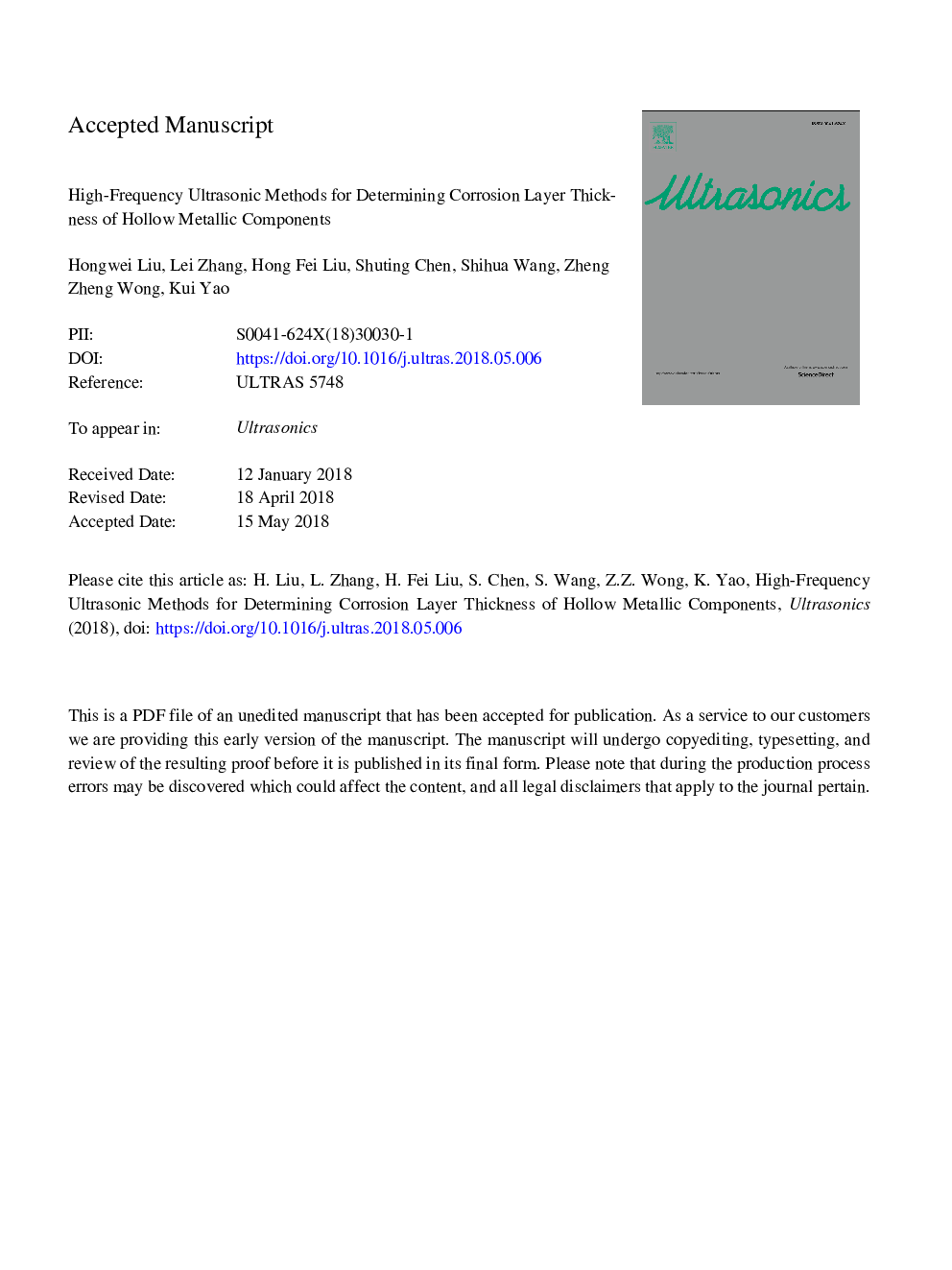| Article ID | Journal | Published Year | Pages | File Type |
|---|---|---|---|---|
| 8129865 | Ultrasonics | 2018 | 15 Pages |
Abstract
Corrosion in internal cavity is one of the most common problems occurs in many hollow metallic components, such as pipes containing corrosive fluids and high temperature turbines in aircraft. It is highly demanded to non-destructively detect the corrosion inside hollow components and determine the corrosion extent from the external side. In this work, we present two high-frequency ultrasonic non-destructive testing (NDT) technologies, including piezoelectric pulse-echo and laser-ultrasonic methods, for detecting corrosion of Ni superalloy from the opposite side. The determination of corrosion layer thickness below â¼100â¯Âµm has been demonstrated by both methods, in comparison with X-CT and SEM. With electron microscopic examination, it is found that with multilayer corrosion structure formed over a prolonged corrosion time, the ultrasonic NDT methods can only reliably reveal outer corrosion layer thickness because of the resulting acoustic contrast among the multiple layers due to their respective different mechanical parameters. A time-frequency signal analysis algorithm is employed to effectively enhance the high frequency ultrasonic signal contrast for the piezoelectric pulse-echo method. Finally, a blind test on a Ni superalloy turbine blade with internal corrosion is conducted with the high frequency piezoelectric pulser-receiver method.
Related Topics
Physical Sciences and Engineering
Physics and Astronomy
Acoustics and Ultrasonics
Authors
Hongwei Liu, Lei Zhang, Hong Fei Liu, Shuting Chen, Shihua Wang, Zheng Zheng Wong, Kui Yao,
